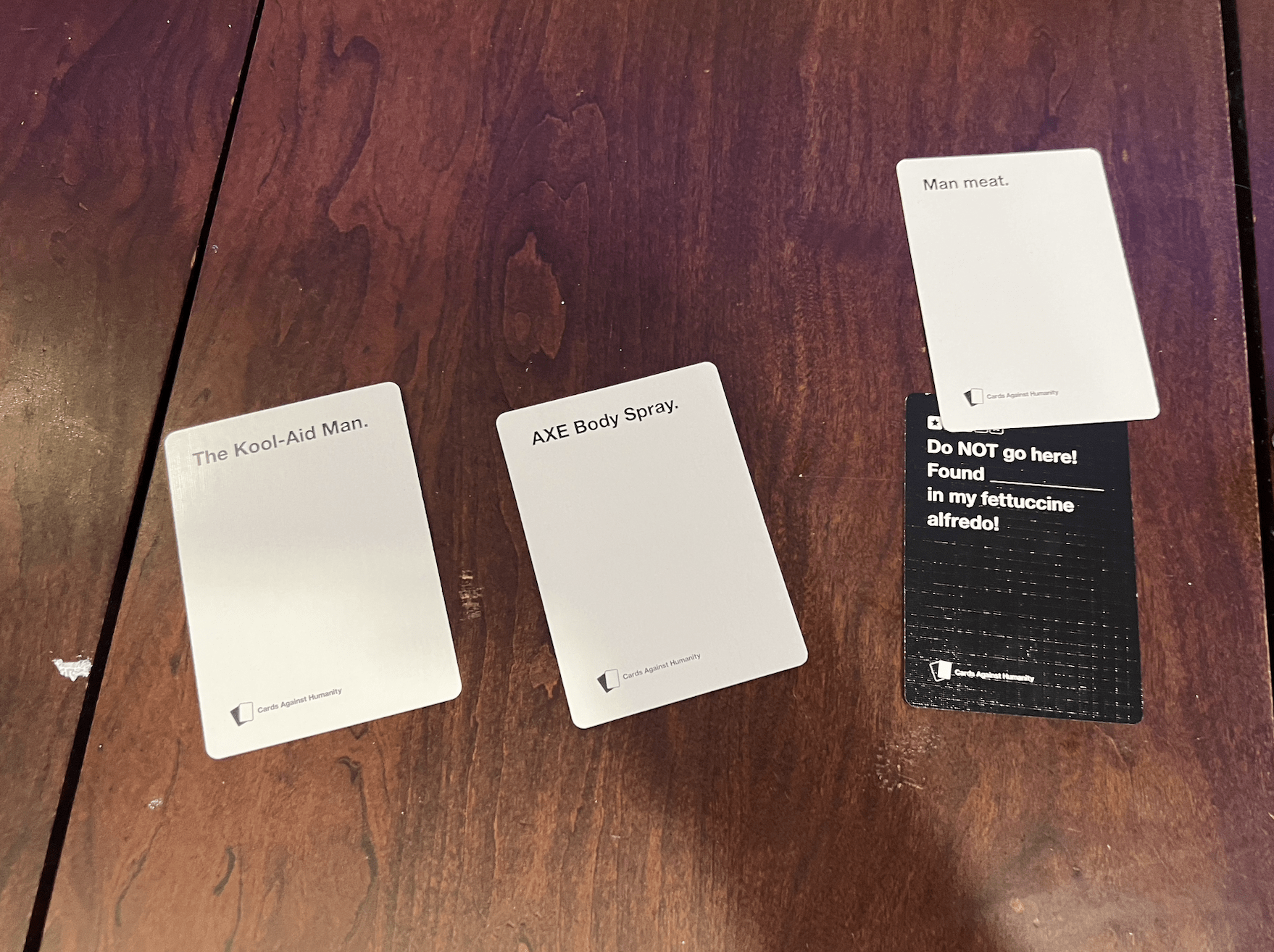
One of my favorite party games growing up was Cards Against Humanity by Josh Dillon Daniel Dranove Eli Halpern Ben Hantoot David Munk David Pinsof Max Temkin Eliot Weinstein. In this physical card game, any number of players (3-20+) complete fill-in-the-blank statements with provocative, politically incorrect, and scandalous phrases. Players compete to put the funniest answer to a prompt during each round, and one player anonymously judges the round. The objective is to be absurd and humorous as a way to bring players closer together. Due to the offensive nature of the cards, the game targets middle school and above. I was obsessed with this game when I was younger, but have moved away from Cards Against Humanity as I’ve grown up. This is because Cards Against Humanity is a fantastic submission game, but is limited as a party game by its low-risk, lost-contact nature.
Cards Against Humanity achieves the aesthetic of submission because the judging mechanic of each round creates a dynamic of unique fill-in-the-blank answers each round that becomes increasingly offensive, humorous, or absurd. Each round is different from the rest and this game could be played for hours. The game also creates the aesthetic of fellowship because the mechanic of offensive cards creates a dynamic of side conversations and storytelling that come from people’s heinous fill-in-the-blank responses to certain prompts. The game is also compelling because it encourages players to be “socializers.” The fun of this game comes from interactions with other players. The game mechanics of Cards Against Humanity is extremely similar to Apples to Apples, with the main difference being the offensiveness of the cards. In this way, Cards Against Humanity is more interesting to adults over time because players are continuously scandalized.
Cards Against Humanity stands out against other card-matching/answer-judging games like Pictionary because it isn’t skill-based on drawing and requires less material to set-up. The variation in cards and prompts makes it easier as a submission game. Although the offensive nature of cards in this game encourages players to reveal scandalous inner desires, hot takes, and stories, Cards Against Humanity does not create as much as fellowship as games like We Are Not Really Strangers or Truth or Dare. This is because unlike WRNS, Cards Against Humanity does not require players to be vulnerable, and players can leave the game at the same level of friendship as when they started. The low-contact, low-risk nature of Cards Against Humanity does not progress as the game goes on, limiting the amount of “fellowship” that can truly be achieved. The offensive cards can even be deemed as “awkward” and “uncomfortable” for groups of players who do not know each other. Additionally, the lack of progression in vulnerability in the game turns “submission” into “boredom” when played with groups of people who do not know each other. Thus, to improve Cards Against Humanity, I would suggest adding an expansion pack encouraging “fill-in-the-blank” response and prompt cards that must come from the personal experiences of players. This mechanic would create the dynamic of sharing stories and justifying entries which would increase fellowship. Fill-in-the-blank cards would create a dynamic of informal competition over time because players submit to being creative each round.
Cards Against Humanity excels in bringing together groups of friends who are comfortable with each other but fails to deliver on the “get-to-know-you” aspect of a great party game. If the game could be modified to include different levels of vulnerability, I would continue playing the game with the same fervor as I did in middle school.



